Rong Mayhem is screaming. “This kid puts the whole tech community to shame! His presentation is better than 90% of the professionals!” Bill Blaire mutters a response as if talking to himself. “Why don’t them guys make that loudmouth pipe down?” Thinking back, I recall Rong Mayhem getting silenced—even banned, but his harsh voice sometimes broadcasts the raw truth and I find that valuable.
In a roomful of investors and professionals, I sit between Bill and a six-foot-six giant of a man, Dr. Alexander Harbinger, three-time Ph.D. Alex looks around me to address Bill in his faintly German accent. “It is my heartfelt belief that the man is correct in his assertion,” he says. Bill responds with a scowl and crosses his arms. I nod and give a thumbs-up—I agree with every word Ron just blurted out.
The next speaker begins his pitch and Alex lets out a whispered, “Yes.” I feel the enthusiasm in the room. He leans close to my ear. “Think of it, John: These are high school children. One is only an 8th grader. And at a time that the public schools struggle to teach reading and simple arithmetic. We are seeing hope for the future of our country.”
I meet his eyes. I see the passion there. I’m getting treated to the six best startup pitches of the year. We’re at POWER PITCH, the capstone event of a partnership between IMSA and the MIT Enterprise Forum right here in Chicago. It’s the 25th anniversary of IMSA—the Illinois Mathematics and Science Academy—the high school with some of the smartest kids in the world. They’re proving it tonight—showcasing their new entrepreneurial program called TALENT.
“Nice digs.” It’s Bill Blaire, patching things up with Harbinger. I lean back in my leather chair and take in the enormous room, the multiple screens—the IBM Innovation Center is a beautiful facility. “TALENT,” Bill says, “Acronym, anagram–whatever. Must stand for somthin’ but I duno what. Teens Always Learn…Ten Advanced Lunatics… That can’t be it.” Then he taps the back of my head. “One thing’s sure—these kids know their stuff—anybody can see that.”
Alex responds for me: “These young people are more than just poised. They are professional and their fledgling ventures deserve serious attention.”
So, Bill challenges him. “You ready to plunk down a quarter mil in a company started by a 17-year old kid?” As the next speaker steps to the front, Alex surprises me. “Yes,” he says.
“What about that 12-year old?”
“Of course.”
Alex is right. These kids are for real. They aren’t geeks and they aren’t loners. Each of them comes with a team. Tonight we’re only seeing technology ventures. In the back of the room sit a group of students with non-tech companies. Smiling. Polite. Quiet. What kind of ideas did they cook up? I wish there was time to hear them all.
At break, a guy I don’t know pulls me aside, bursting with the need to let off some steam. He praises the kids up and down then finishes with, “Don’t you realize these entrepreneurs aren’t even legal age?”
I return to the room and Harbinger is asking Blaire what he thinks about one of the contestants. Alex sees real potential. And sure enough, at the end of the evening that one takes first place and the lion’s share of a fat cash prize.
Back at my seat, Alex points out an older gent in front. “That is Dr. Moises Goldman. He created this partnership between the MIT Enterprise Forum of Chicago and IMSA.” I know Moises. I like him—everybody does. We’re all glad he’s still making an impact on the entrepreneurial spirit of this city. Moises introduces Carl Heine, lead innovation architect of TALENT and I become conscious of an unusual number of Ph.D. level academics in the room.
I think back to the icebreaker before the session. We grab some food and after Bill complains about the lack of beer, he says, “Lookit all these kids in the crowd. Notice something strange?”
It takes me a moment to process that. Finally, “They’re all dressed like business people. Real clean cut. Unusual for high school kids.”
Bill glares at me as if I’m dead from the neck up. “Naw, it’s way bigger than that. Look—none of ‘em is usin’ a smart phone. The only guy doin’ that is the old man over there in the corner.”
I have to smile. Can you beat that?
The judges make up quite a group—not the usual panel of pitch coaches and angels investors:
- Bob Geras—CEO of LaSalle
- Kevin Willer—CEO of CEC
- Nik Rokop—Executive Director of Knaap Entrepreneurial Center
- Dr. Lance Pressl—President of the Chicagoland Chamber of Commerce Foundation
- Jose deFrancisco—Director of Marketing for Cloud Computing at Lucent.
At the end, they present the winners with checks—great big checks.
“Hey, lookit the size of that thing.” Bill laughs but Alex is clearly annoyed with him. “Are you referring to its physical dimensions or the dollar denomination, Mr. Blaire?”
“Both. Big as a tabletop. Numbers ain’t shabby neither. A kid can do a lot with that kinda dough.”
I need to catch a train and quickly look over my notes on the six ventures.
ATONA
Lydia Auch and Kenso Esquivel – IMSA – 1st Place Winners.
These kids give a peek at the future of music-reading technology and put on a good show too. Kenso tries to turn pages of sheet music while playing a violin. Impossible. His music falls in a heap on the floor. That gets a big reaction from the crowd. Lydia takes over the presentation with this quote, “There has been almost no innovation in music technology since the 15th century.”
Good start.
Their offering is an electronic music reader with double touch screens, each large enough to see an entire sheet of music with e-ink technology—much like an oversized Kindle, not those tiny backlit tablet screens. You can see your music in any light and the device consumes almost no juice. A musician can store an entire library of music in one location and carry it everywhere—and it turns pages automatically with the music. Other features include a tuner, a sound recorder, a metronome, and a USB interface. A musician can scan hard-copy sheet music or download it on the cheap. Hey, I want one of these things.
They acquitted themselves like professional speakers with super-cool visuals, a clever marketing plan, and well-justified numbers. I won’t go into those details—all six contestants did a fine job. The technical side of their presentations wowed us as much as the smooth delivery and slick graphics.
TOSIgram
Andrew Chen – Nequa Valley High School – 2nd Place Winner.
This kid proved that TALENT is open to students outside IMSA. He started with a clear statement. “The way we deal with privacy is broken.” He went on to point out that everybody needs to decide on privacy boundaries. But who wants to read a 9-page document? Who wants to draft one? TOSI stands for “Terms of Service Made Easy.”
A Carnegie-Mellon study shows that reading privacy policies use up an average of 25 days a year per person and soon they’ll be required for the thousands of mobile apps. Every storefront needs one and the list is growing. TOSIgram has created an online step-by-step process to create these documents. It bypasses the lawyers. It provides a summary-driven interface that lets the user quickly drill down to the clauses that matter.
The Living TEG
Shivansh Padhy – Granger Middle School – 3rd Place Winner.
That’s right—he’s in 8th grade, maybe 13 or 14 years old. He poses this idea: “Imagine a world where YOU are the source of power for all your energy needs.” He’s discovered a practical way to use excess human body heat to re-charge electronic devices. This is both extreme green and extremely useful. No more batteries or electrical outlets.
Turns out the human body produces 116 watts of heat every hour. A smart phone only needs five. Body heat can run a cell phone continuously and energy can be stored for higher output devices. His first target is cell phones, then medical electronics, then radios and flashlights. He has a working prototype. If he’s in 8th grade now, what will he do when he gets to IMSA? When he gets to MIT?
TiqFolio
Kevin Wang – IMSA
This one wins my prize for the best speaker. He’s the super-glib one that caused Ron May to blurt out his praise at the start of the meeting. TiqFolio is a unique online storefront concept for selling digital products—a gap in the market. He’s applying a proven business model to a new segment.
Sofi
Shawn Jain – IMSA
“Put your portfolio online.” People love to talk about their stocks on the Internet. They love to socialize on the Internet. Why not combine those two? The result is an investor community. People helping each other succeed.
QuickLine
Jennifer Ren, Mitch Bieniek, and Konrad Wrobel – IMSA
Imagine creating your own bus route—one that fits your needs. These kids have a network to dynamically optimize bus routes and make them more efficient. They gather input from the end user then use a computer algorithm to re-route and size the transportation. A working prototype is already in place in the form of an Android app.
What’s next?
This summer, TALENT is putting on a 2-week micro incubator to bring in partners and make student’s ideas a reality. I’d like to see them find the right consultants and the right investors—the kind that’ll really help these kids.
For Information on the summer TALENT incubator, contact Dr. Carl Heine at heine@imsa.edu
.
GO BACK TO PART 1 – THE TWO LAWS
.
Find Chicago Venture Magazine at
www.ChicagoVentureMagazine.com Comments and re-posts are welcomed and encouraged. This is not investment advice – do your own due diligence. I cannot guarantee accuracy but I give you my best.
© 2012 John Jonelis – All Rights Reserved.



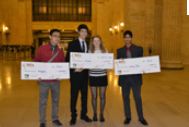
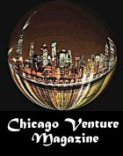











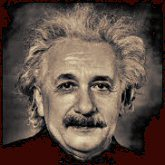



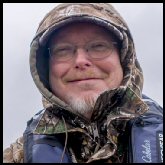






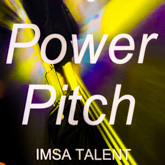
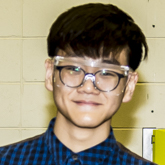











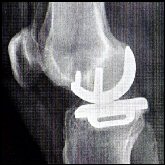











































































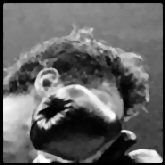





























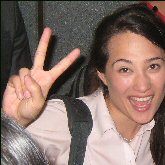























Pingback: IMSA Power Pitch 2012 « cloudnouveau home
Those kids deserve all the credit they can get.
Pingback: THE TWO LAWS | Chicago Venture Magazine